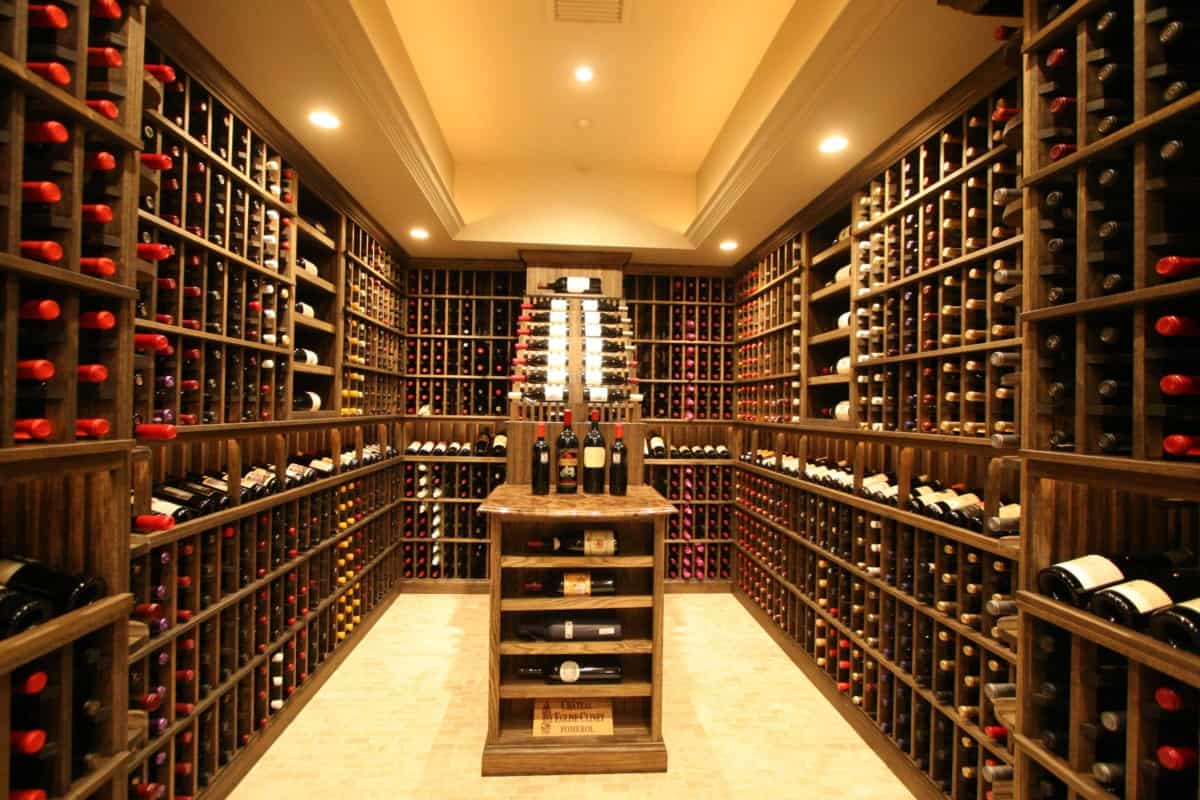Keep in mind that a garden wine cellar has to be planned and constructed similarly to a refrigerator if you intend on building one. Installing a wine cellar cooling unit in an improperly converted area will not offer you the expected benefits and may cause harm to your ceiling, walls, and most importantly, your wine.
The key to successfully managing the temperature and humidity of your wine’s storage environment is to properly prepare the space in which the wine will be aged.
The garden wine cellar should be placed below ground level. The further below ground level that the cellar is situated, the better it will be. Alternately, wine cellars may be constructed on the first floors of the home, in the garage, in the basement or in any other unused area that is available. If the house has central air conditioning, these types of cellars can perform extremely well.
Wherever you decide to construct your wine cellar, you need to be certain that the location does not experience extremes in temperature throughout the year, particularly during the months of winter and summer.
Quick Navigation
Framing
The majority of wine cellar designs are constructed using wood studs measuring 2 inches by 6 inches for the outside walls; however, if you don’t have the room for this, you may use wood studs measuring 2 inches by 4 inches for the walls that face the inside of the home. If you have a floor that gets really chilly, you may want to think about adding wood “sleepers” that are 2 inches by 2 inches so that insulation can be placed in between them.
Door
The best option for wine cellar doors is a high-quality, exterior-grade insulated one that comes complete with a jamb and weather stripping. Wooden doors that have been constructed to order might be suitable if they are equipped with sufficient weather stripping and insulation. There is also the option of using metal doors that have insulation on the inside.
Be aware that if you want to put glass doors on your house wine cellar, they need to be the kind that has a thermal seal between the panes. You will need to choose a wine cellar cooling unit that has a higher BTU output since glass doors provide very little in the way of insulation (R-value).
Walls
It is recommended that you use moisture-resistant drywall, often known as green boards, for the walls and ceiling. Green board offers excellent resistance to moisture and dampness, and it is also very easy to paint. Make careful to pick wood species that do not emit an aromatic odor.
Racks
You need to choose shelving for your collection in consideration of both the kind of wine bottles you acquire and the way you want to display them. Racks are selected based on the layout of your wine cellar, the amount of money you have available, and the amount of space you have available. You have the option of going with commercial or bespoke construction, and either one is acceptable.
Vapor Barrier
R-19 insulation and a vapor barrier are the very minimum requirements for a ceiling’s insulation.
If the floor is concrete, then just a vapor barrier is required, but any floor that is above ground level has to have R-19 insulation installed in addition to a vapor barrier.
The side of the walls of your wine cellar that is warmer should be the side where you put the vapor barrier. For the most impressive results, I suggest that you use plastic sheeting that is 6 or even 8 millimeters thick.
Insulation
Installing insulation is the next step after putting up the vapor barrier. In the event that it is not feasible to place the vapor barrier on the outside of the building, the plastic should be erected within the subterranean room. Typically, one should cover the whole inside, but one should leave the plastic sheeting free in the stud cavities so that insulation may be added between the studs. This allows one to wrap the complete interior.
Insulation may be created using either blown-in or rigid foam, or even fiberglass in certain cases. Insulating your wine cellar with R-13 on the walls and R-20 on the ceiling is recommended for optimal temperature control.
You have a lot of leeways to choose from when it comes to the material for the walls of your wine cellar; groove wood, tung, and sheetrock are all acceptable choices. Green Board is perhaps the greatest option given its resistance to dampness and its simplicity in terms of painting. Make sure the wood you choose is resistant to dampness, no matter what kind it is!
Keep in mind that a plastic vapor barrier has to be stretched around all of the walls and the ceiling for the effect to be complete.

